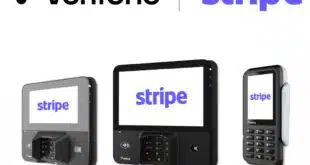There’s some good news for U.S. debit card issuers in the form of reduced fraud rates, according to the 2017 Debit Issuer Study released Monday by Pulse, the electronic funds transfer network owned by Discover Financial Services.
The fraud-loss rate for signature-debit transactions fell 30% from 2015’s 2.6 cents per transaction to 1.8 cents in 2016, after increasing 18% from 2014 to 2015. For PIN-debit transactions, the fraud-loss rate decreased 25% to 0.6 cents from 2015’s 0.8 cents. Expressed another way, fraud losses per active debit card decreased to $3.80 from $5 in 2015, according to Oliver Wyman, the New York City-based consulting and research firm that Pulse commissioned to do the study.
Fifty banks, both large and small, as well as credit unions participated in Pulse’s 12th yearly survey of the debit market. The financial institutions collectively issue 134 million debit cards.
This year’s survey focused on the usefulness of study results for financial institutions, Steve Sievert, Pulse executive vice president of marketing and brand communications, tells Digital Transactions News in an email.
Among these metrics is debit card use in mobile wallets. Most—74%—of issuers make their cards eligible for use with Apple Pay. Samsung Pay, at 55%, is the next-most popular, followed by Android Pay, 51%, and other wallets, 26%.
As of January 2017, 6.3% of debit cards were loaded onto Apple Pay, an approximately 80% increase from 3.5% a year earlier. Debit cards loaded onto Samsung Pay increased to 0.8% from 0.2%. Android Pay loads increased from 0.2% of cards to 0.6%.
Interestingly, consumers made more transactions per month with an enrolled card on Samsung Pay, an average of 1.3 times, compared with 0.6 for Apple Pay and 0.7 for Android Pay. Part of the explanation could be Samsung Pay’s ability to make contactless transactions with a wireless version of magnetic stripe technology called MST that expands the number of potential point-of-sale terminals beyond just those equipped with near-field communication technology.
Still, Apple Pay has the highest estimated share of debit transactions at 0.19%, in comparison to Samsung Pay, 0.05%, and Android Pay, 0.02%.
Consumer use of mobile wallets has yet to catch fire. Part of the reason may be that users view loading debit cards into mobile wallets as similar to using them online, from a security standpoint, Sievert says.
“Educating them about the added security features of mobile wallets could increase their usage in that channel,” he says. “Secondly, and more perhaps importantly, consumers need a reason to change their behavior at the point of sale. While the introduction of chip readers has introduced a level of friction into the process of completing a transaction, paying with a card remains a relatively painless process. And, at many retailers, swiping is still the norm. Until consumers have a ‘better-than’ reason to switch to paying with a mobile device, they’ll stick with the card.”
One factor that may prompt more mobile-wallet use relates to how wallets can eliminate issues of paying for low-value transactions. Debit cards are ideal for low-value transactions, too, their proponents argue. The Pulse study found that the 2016 average ticket with a debit card was $39, down from $40 in 2005, but an increase from $37 in 2015.
“When taking inflation into account, this change is probably more significant than it appears,” Sievert says of the change. “The reduction indicates that consumers are increasingly using their debit cards as cash replacement for lower-value transactions.”
Issuers should be advocating debit card use for low-value transactions, he says. “Our study doesn’t include information about issuers’ marketing programs. However, use of debit for small-ticket purchases should be part of the marketing message issuers use to move their clients away from cash. By focusing on the convenience, security, and budgeting benefits of debit, issuers can keep their debit cards top-of-wallet for everyday spend.”
Three factors are driving the use of debit cards for low-value transactions, says Tony Hayes, partner and global head of Oliver Wyman’s payments practice. It’s the confluence of messaging, increased volume of small-value transactions overall, and consumer behavior that no longer shies away from using debit cards for these transactions. “A few years ago, if something was a few bucks, most would have paid with cash,” Hayes says.
2016 also marked a shift in EMV and debit cards. Some 90% of U.S. debit cards now carry EMV chips, the study finds. The number of chip-on-chip transactions—where the card and the POS terminal are EMV enabled—stood at 30% in January 2017 compared with 11% the year prior. “There was all of this talk the industry was moving slow,” Hayes says. “Last year, clearly it wasn’t.”
With chip cards in most consumer wallets, future EMV growth will come from merchant acceptance, Hayes says. “Future growth will have to come from the merchant side in terms of more terminal enablement, and that will be a slower growth curve because most of the big in-store retailers have already done their upgrading. It leaves the long tail of mom-and-pop retailers as well as a number of merchants that are EMV ineligible.” This last group includes those like card-not-present merchants and fuel retailers.
Other data from the Pulse study show that, overall, consumers made 22.9 transactions per active card per month. Annual spend per active card was $10,530 in 2016.
In another finding, the study says the average blended interchange rate for issuers exempt from the interchange controls imposed by the Dodd-Frank Act’s Durbin Amendment—those with fewer than $10 billion in assets—was 39 cents in 2016, the same as in 2015.





